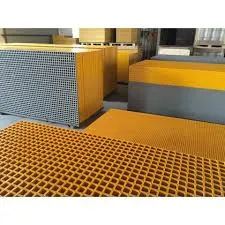
-
 Afrikaans
Afrikaans -
 Albanian
Albanian -
 Amharic
Amharic -
 Arabic
Arabic -
 Armenian
Armenian -
 Azerbaijani
Azerbaijani -
 Basque
Basque -
 Belarusian
Belarusian -
 Bengali
Bengali -
 Bosnian
Bosnian -
 Bulgarian
Bulgarian -
 Catalan
Catalan -
 Cebuano
Cebuano -
 China
China -
 China (Taiwan)
China (Taiwan) -
 Corsican
Corsican -
 Croatian
Croatian -
 Czech
Czech -
 Danish
Danish -
 Dutch
Dutch -
 English
English -
 Esperanto
Esperanto -
 Estonian
Estonian -
 Finnish
Finnish -
 French
French -
 Frisian
Frisian -
 Galician
Galician -
 Georgian
Georgian -
 German
German -
 Greek
Greek -
 Gujarati
Gujarati -
 Haitian Creole
Haitian Creole -
 hausa
hausa -
 hawaiian
hawaiian -
 Hebrew
Hebrew -
 Hindi
Hindi -
 Miao
Miao -
 Hungarian
Hungarian -
 Icelandic
Icelandic -
 igbo
igbo -
 Indonesian
Indonesian -
 irish
irish -
 Italian
Italian -
 Japanese
Japanese -
 Javanese
Javanese -
 Kannada
Kannada -
 kazakh
kazakh -
 Khmer
Khmer -
 Rwandese
Rwandese -
 Korean
Korean -
 Kurdish
Kurdish -
 Kyrgyz
Kyrgyz -
 Lao
Lao -
 Latin
Latin -
 Latvian
Latvian -
 Lithuanian
Lithuanian -
 Luxembourgish
Luxembourgish -
 Macedonian
Macedonian -
 Malgashi
Malgashi -
 Malay
Malay -
 Malayalam
Malayalam -
 Maltese
Maltese -
 Maori
Maori -
 Marathi
Marathi -
 Mongolian
Mongolian -
 Myanmar
Myanmar -
 Nepali
Nepali -
 Norwegian
Norwegian -
 Norwegian
Norwegian -
 Occitan
Occitan -
 Pashto
Pashto -
 Persian
Persian -
 Polish
Polish -
 Portuguese
Portuguese -
 Punjabi
Punjabi -
 Romanian
Romanian -
 Russian
Russian -
 Samoan
Samoan -
 Scottish Gaelic
Scottish Gaelic -
 Serbian
Serbian -
 Sesotho
Sesotho -
 Shona
Shona -
 Sindhi
Sindhi -
 Sinhala
Sinhala -
 Slovak
Slovak -
 Slovenian
Slovenian -
 Somali
Somali -
 Spanish
Spanish -
 Sundanese
Sundanese -
 Swahili
Swahili -
 Swedish
Swedish -
 Tagalog
Tagalog -
 Tajik
Tajik -
 Tamil
Tamil -
 Tatar
Tatar -
 Telugu
Telugu -
 Thai
Thai -
 Turkish
Turkish -
 Turkmen
Turkmen -
 Ukrainian
Ukrainian -
 Urdu
Urdu -
 Uighur
Uighur -
 Uzbek
Uzbek -
 Vietnamese
Vietnamese -
 Welsh
Welsh -
 Bantu
Bantu -
 Yiddish
Yiddish -
 Yoruba
Yoruba -
 Zulu
Zulu
Exploring the Applications and Innovations in GRP Grating Technology
Understanding GRP Grating Applications and Benefits
Glass Reinforced Plastic (GRP) grating, also known as fiberglass grating, has emerged as a vital fixture in various industries due to its unique properties and advantages. This innovative material combines the strength of fiberglass with a lightweight structure, making it an ideal choice for applications where durability and safety are paramount. In this article, we will explore what GRP grating is, its characteristics, and its diverse applications across different sectors.
What is GRP Grating?
GRP grating is manufactured by embedding fibrous glass strands in a resin matrix, resulting in a composite material that showcases remarkable resilience and longevity. This grating can be produced in various shapes and sizes, often resembling traditional metal or wooden grating but offering significant advantages over these conventional materials. One of the most notable features of GRP grating is its corrosion resistance, which makes it particularly suitable for harsh environments.
Key Characteristics of GRP Grating
1. Corrosion Resistance One of the most significant benefits of GRP grating is its excellent resistance to corrosion from chemicals, water, and other harsh environmental factors. This makes it an ideal choice for use in industries such as chemical processing, wastewater treatment, and marine applications.
2. Lightweight GRP grating is much lighter than traditional steel or aluminum grating, which simplifies transportation and installation. This lightweight characteristic also reduces the load on supporting structures, thereby saving costs in construction and maintenance.
3. High Load-Bearing Capacity Despite its lightweight nature, GRP grating maintains a high load-bearing capacity, making it suitable for heavy-duty applications. This property ensures that it can support significant weights without bending or breaking.
4. Slip Resistance Many GRP grating products come with a slip-resistant surface, which enhances safety in areas where footing might be uncertain, such as walkways, stairs, and industrial floors. This feature is particularly important for workplaces that prioritize worker safety.
5. UV Stability GRP grating is designed to withstand ultraviolet (UV) light exposure without significant degradation. This makes it suitable for outdoor applications where it will be exposed to sunlight and varying weather conditions.
grp grating

Applications of GRP Grating
GRP grating is utilized in a vast array of applications, spanning multiple industries due to its versatility and performance characteristics. Here are some prominent sectors where GRP grating is commonly employed
1. Chemical Processing In environments where exposure to corrosive chemicals is a risk, GRP grating provides a robust flooring solution that resists degradation and eliminates the need for frequent replacements.
2. Water Treatment Facilities GRP grating is extensively used in wastewater treatment plants, where its corrosion resistance and durability make it ideal for catwalks, platforms, and covering for channels.
3. Marine and Offshore Applications Due to its lightweight and corrosion-resistant properties, GRP grating is a staple in shipbuilding and offshore structures, providing safe access and walkways.
4. Industrial Settings In factories and warehouses, GRP grating is often employed for mezzanines, walkways, and drainage covers, ensuring that employees remain safe while working in environments that may involve heavy foot traffic.
5. Public Infrastructure GRP grating is also used in pedestrian walkways, park benches, and public utilities due to its aesthetic appeal and ability to blend into various designs while providing functional benefits.
Conclusion
In summary, GRP grating stands out as a superior alternative to traditional grating materials. Its combination of corrosion resistance, lightweight design, high load-bearing capacity, slip resistance, and UV stability makes it an essential material across many industries. As industries continue to prioritize safety, durability, and efficiency, the demand for GRP grating is likely to increase, making it a pivotal element for future developments in industrial and public infrastructure. Its adaptability and range of applications highlight its importance as a construction material in today’s diverse environments.









